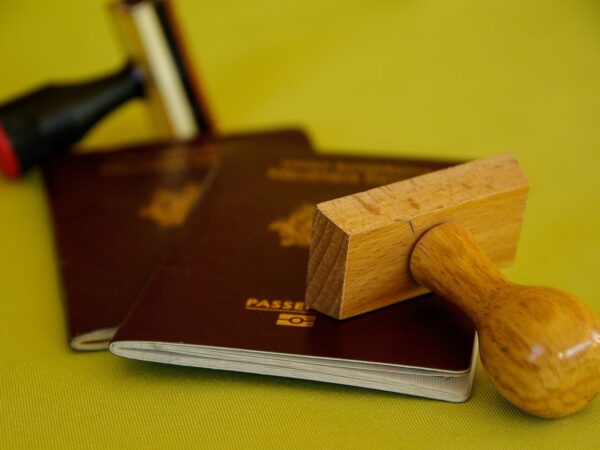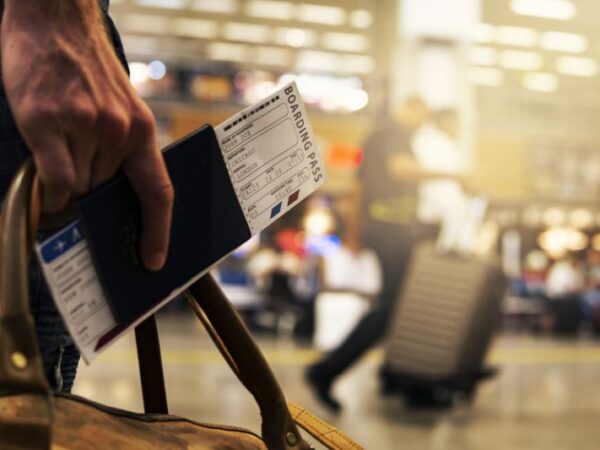The application process for any Schengen Visa is designed to determine whether intending arrivals pose a criminal or security risk to the Schengen Area. Applicants must supply details of previous convictions for criminal or terrorist offences as well as any history of previous breaches of visa regulations, deportations or trips to areas of conflict. Based on the information supplied on the application form, which is checked against numerous security databases across the globe, the applicant is either granted or denied the visa.
However, security is not the only concern as there is always a risk the applicant may wish to enter the area and then disappear into the general population. For this reason, most Schengen Area member states will also require applicants to supply a detailed summation of the entire itinerary while in the country or the Schengen Area if onward travel to another member state is planned.
Purpose of a Travel Itinerary
Collecting all the relevant travel and accommodation details and collating these into a travel itinerary can be an arduous task, but it is an important part of the application process. The information on the travel itinerary should be as detailed but concise as possible, bearing in mind it should serve several purposes.
The itinerary should:
- Support the fact that the applicant is a genuine tourist wishing to visit known attractions
- Assure the authorities that the visitor is entering the Schengen Area for valid reasons
- Strengthen the fact that the visitor is unlikely to remain illegally within the Schengen zone
- Show consistency between dates of flights, booked accommodation and daily trips
- Demonstrate the costs of the supplied itinerary can be supported by the visitor’s available funds
For some Schengen countries, a detailed travel itinerary is a mandatory requirement while for others it may be optional. Whether required or not, submitting a travel itinerary is recommended as it will help assure the authorities of the applicant’s validity and increase the likelihood of the visa being granted.
Two Types of Itinerary
A complete, detailed list of how and when every day will be spent is not always necessary. Some Schengen countries only wish to know the dates of arrival and departure from their own country along with details of any accommodation booked. Others, however, request details of where every day will be spent, hotel or guest house bookings and the means of transport between the chosen destinations.
To this end, there are two types of travel itineraries that may be sought: A Flight Itinerary and a Travel Itinerary.
Flight Itinerary
A flight itinerary need not be confined to just flights but can also cover arrival by sea or overland. Whatever the method of arrival, the details required remain the same:
- Confirmation of travel method and dates of arrival and departure, including copies of travel booking
- Times and reference numbers for the method of travel being used
- Passport details, including passport number and expiry date
Airline, ferry, train, or bus tickets need not have been paid for at the time of submitting a visa application but should at least have been reserved. Travellers moving on to another country, whether in the Schengen Area or not, should also have proof of the onward connection. A one-way ticket to enter the country is not acceptable as the consular authorities will require proof that the traveller intends to leave the country after the specified amount of time.
For some Schengen countries, a detailed day-to-day account of intended travel is not mandatory, but a brief outline will help with receiving approval and is always recommended that this should be included whether requested or not.
Travel Itinerary
A travel itinerary is a far more complicated document to compile as the visa applicant must supply what is basically a day-to-day schedule of what is planned while in the Schengen Area. This will include all the information pertaining to the flight itinerary but much more.
Before commencing to compile day-to-day, the traveller must know which Schengen country is being visited first (if more than one country is planned), the number of days being spent in that country and have as much information and documentation as possible regarding any accommodation that has been booked.
Before submitting the Schengen Visa application, the applicant should have:
- Confirmed flight (or alternative modes of travel) bookings
- Have confirmation of reservations made at hotels or guest houses
- A list of planned sightseeing or outings planned and on which dates
These are necessary requirements as they will demonstrate to the relevant authorities that the applicant is a genuine visitor and has made plans to enter, enjoy and leave the country, as well as provide a means of locating the visitor on any given day should the need arise.
Itinerary Template
Planning outings and sightseeing trips in a foreign country weeks in advance is not easy to do and takes organising. Visa applicants should list all the sights they wish to see and the places they want to visit on paper and then organise everything logically. Knowing where to be, what to see and how many days are required to complete the list will allow the visitor to make suitable arrangements for accommodation.
Once the draft list has been organised, the details can then be transferred onto an itinerary template, which many consular offices provide on their websites. These day-to-day travel itinerary templates may also be found on various websites that deal with Schengen Visa applications.
Alternative Accommodation
Not all visa applicants will require booked hotel accommodation as they may be staying with friends or relatives or perhaps on a camping holiday. In the case of visitors who are staying with friends or family members, it will be necessary to provide not just the relevant dates but also a letter confirming the arrangement. This will entail the host writing a letter of invitation that will detail the relationship between host and guest, the dates of the visit, and how expenses incurred will be covered. The host must also provide proof of status, such as a passport or residency permit.
Similarly, visitors intending to stay at campsites, caravan parks, or similar should confirm the booking from the company providing the accommodation as well as full contact details for the person, company or agency concerned. The accommodation agency must also provide an official letter on headed paper and this must be addressed to the consulate or embassy processing the visa application.
Costly Errors
Compiling a detailed day-to-day travel itinerary may seem like a simple task, but the possibility of making mistakes is significant, and these errors can be costly. Numerous Schengen Visa applications are returned or even refused because the information provided on an itinerary is confusing, illogical or considered to be intentionally misleading.
Among the most common errors made by applicants when supplying a travel itinerary are:
- Failing to provide up-to-date and accurate passport details.
- Failure to provide copies of genuine flight (or other means of travel) reservations or tickets.
- Confusing a flight itinerary and a travel itinerary, thereby failing to provide the requested information.
- Having insufficient funding to cover all the planned excursions and expenses listed on the itinerary.
- Consistency is lacking across the details provided.
- The planned itinerary does not match the information provided in other documentation.
The purpose of both the flight and travel itinerary is to enable consular authorities to make an informed decision as to whether the applicant should be granted a Schengen Visa or not. If, for example, an applicant lists a number of tourist attractions in Town A for the second and third day of the visit but has hotel reservations in a distant Town B for the same dates, this will raise a red flag.
Similarly, if consular authorities estimate the funding required for tourist attractions, outings, and meals is significantly in excess of the applicant’s declared available funds, then questions will be asked. A major cause for concern would be an applicant providing flight (or other) tickets showing arrival and departure dates different from those stated on the visa application form.
Due Care and Attention
Completing a travel itinerary should be done in a considered, logical and concise manner paying due care and attention to all details and dates provided. The itinerary should be easy to read, follow a logical course and demonstrate that the applicant has spent time and care in compiling all the information provided.
Complications and possible issues can be avoided by:
- Ensuring entry and exit dates from the Schengen Area correspond to those on any travel documents.
- Checking any accommodation booked matches the locations of any planned outings or visits.
- Checking pricing for attractions being visited as well as expenses do not exceed funds available.
- Ensuring all documentation requested is included with the visa application.
While these basic guidelines may seem obvious, it is surprising how many applicants omit important supporting documents or supply irrelevant material. Paying attention to what is requested is key to a successful outcome, so all paperwork and documentation should always be checked thoroughly and then double-checked. As stated previously, even if only a flight itinerary is requested, it is always a good idea (even an essential one) to include a day-to-day itinerary.
No British Citizens Need to Apply
Despite Brexit, British citizens still enjoy visa-free travel to any of the EU and Schengen member states for stays of up to ninety days. However, the appropriate form of Schengen Visa may be required for longer stays or if the stay is for a specific purpose, such as taking up employment or for study purposes.
However, this is the situation as it stands in 2023 and may change in the future. From 2024 onwards, British visitors to any of the EU countries (which includes the bulk of the Schengen member states) will need to have an ETIAS-approved passport. ETIAS (European Travel Information and Authorisation System) is a type of digital visa linked to a passport which shows up when scanned at the passport holder’s point of departure regardless of the form of travel being used or the country of origin.
Possessing ETIAS approval before any trip to Europe can even begin is expected to be a mandatory requirement sometime during 2024 but certainly in 2025. The ETIAS, once operational, will also cover the Schengen Area countries because of an agreement between EU and Schengen authorities, but this does not guarantee that British passport holders will not require a Schengen Visa at some point in the not-too-distant future.




